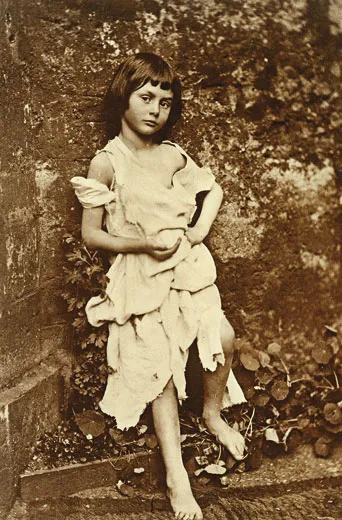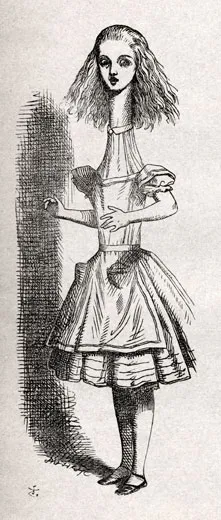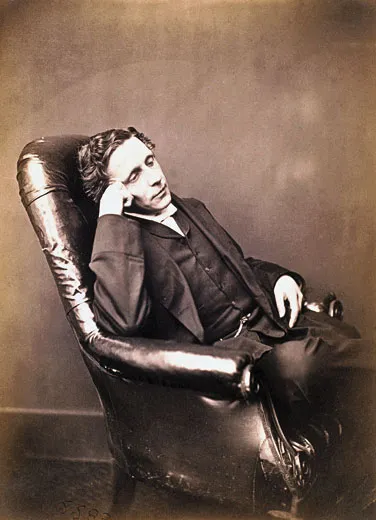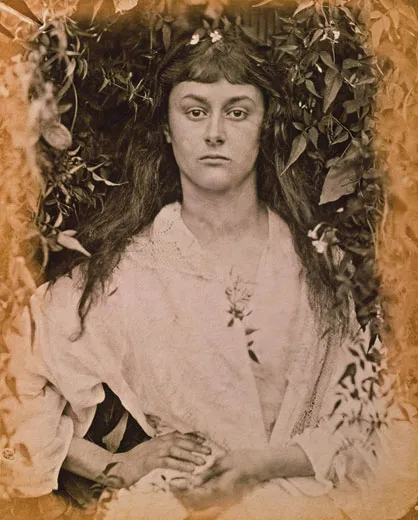Lewis Carroll’s Shifting Reputation
Why has popular opinion of the author of Alice’s Adventures in Wonderland undergone such a dramatic reversal?
/https://tf-cmsv2-smithsonianmag-media.s3.amazonaws.com/filer/Presence-Lewis-Carroll-Charles-Dodgson-631.jpg)
The Rev. Charles Lutwidge Dodgson was a teacher of mathematics at Oxford and a deacon of the Anglican Church. Some colleagues knew him as a somewhat reclusive stammerer, but he was generally seen as a devout scholar; one dean said he was “pure in heart.” To readers all over the world, he became renowned as Lewis Carroll, the author of Alice’s Adventures in Wonderland.
Alice was popular almost from the moment it was published, in 1865, and it has remained in print ever since, influencing such disparate artists as Walt Disney and Salvador Dali. Tim Burton’s Alice in Wonderland, just released in movie theaters nationwide, is only the latest of at least 20 films and TV shows to be made from the book. But if Alice has endured unscathed, its author has taken a pummeling.
Since the 1930s, biographers and scholars have questioned the nature of Dodgson’s relationship with the 10-year-old girl to whom he first told the story, and since the 1960s his work has been associated with the psychedelic wing of the countercultural movement. When some of Dodgson’s photographs—he was an accomplished portraitist—were exhibited in 1999, a New York Times reviewer quoted Vladimir Nabokov (who had translated Alice into Russian) as saying there was “a pathetic affinity” between the photographer and the pedophilic narrator of Nabokov’s novel Lolita. Tim Burton recently described Dodgson’s stories as “drugs for children” and Wonderland as a place where “everything is slightly off, even the good people.”
The decades of interpretation and reinterpretation have created a widening chasm between how modern readers perceive the author and how they receive his work. “Lewis Carroll is treated like a man you wouldn’t want your kids to meet,” says Will Brooker, author of Alice’s Adventures: Lewis Carroll in Popular Culture, “yet his stories are still presented as classics of pure, innocent literature.” As Burton’s movie beckons us down the rabbit hole once again, it might be wise to ask: How did we arrive at this curious state of affairs?
Charles Dodgson was born in 1832 in Daresbury, a village in northwest England, the third child (and first son) of Charles Dodgson, an Anglican clergyman, and his wife, Frances. As the household grew to include 11 children, Charles did not lack for company. “He told his brothers and sisters stories, made up games and wrote magazines with them,” says Edward Wakeling, who spent 12 years annotating Dodgson’s diaries. Later in life, “he really enjoyed entertaining children, and they loved him in return.”
After enrolling at Oxford in 1850, at age 18, Dodgson became a “senior student”—the equivalent of a fellow—at the university’s College of Christ Church. According to college rules, senior students had to be ordained as priests and take a vow of celibacy; Dodgson evaded the ordination rule and lived at the college unmarried, until his death in 1898, less than two weeks before his 66th birthday.
Like many Victorian bachelors, he became a sort of uncle to his friends’ children, making up stories and games and taking them on short trips; the role ensured him a warm welcome in many homes. In 1855, dean Henry Liddell arrived at Christ Church with his wife, Lorina; their son, Harry, and daughters Lorina (or “Ina”), Alice and Edith. (The Liddells would have five more children.) Before long, Dodgson struck up a friendship with Harry, then 9.
“He taught Harry rowing and arithmetic, spent time with him and took him on outings,” says Wakeling. As Harry’s sisters grew older, he says, “Dodgson also took them under his wing, with their parents’ blessing.”
Dodgson particularly liked to pack a picnic lunch and take the Liddell children boating on the Thames, with adult friends or family to share in the rowing. On a July afternoon in 1862, he took the three Liddell sisters on a stretch of the river between Oxford and Godstow and told them the story that would become Alice. Alice Liddell, then 10, was delighted that the main character bore her name and asked Dodgson to write down the story.
At this time, Dodgson was taking photographs. Although the camera was still a relatively new technology, he had been an early enthusiast, starting in 1856, and he found no shortage of friends who wanted him to make likenesses of them or their children. Alfred, Lord Tennyson, England’s poet laureate, befriended the then-obscure don and let Dodgson photograph him after becoming impressed by one of his child portraits. “You, I suppose, dream photographs,” he said.
Of the approximately 3,000 photographs Dodgson made in his life, just over half are of children—30 of whom are depicted nude or semi-nude. Some of his portraits—even those in which the model is clothed—might shock 2010 sensibilities, but by Victorian standards they were...well, rather conventional. Photographs of nude children sometimes appeared on postcards or birthday cards, and nude portraits—skillfully done—were praised as art studies, as they were in the work of Dodgson’s contemporary Julia Margaret Cameron. Victorians saw childhood as a state of grace; even nude photographs of children were considered pictures of innocence itself.
In discussing the possibility of photographing one 8-year-old girl unclothed, Dodgson wrote to her mother: “It is a chance not to be lost, to get a few good attitudes of Annie’s lovely form and face, as by next year she may (though I much hope won’t) fancy herself too old to be a ‘daughter of Eve.’ ” Likewise, Dodgson secured the Liddells’ permission before taking his now-famous portrait of Alice at age 6, posing as a beggar child in a tattered off-the-shoulder dress; the family kept a hand-colored copy of it in a morocco leather-and-velvet case.
Dodgson’s relationship with the Liddells apparently hit some kind of pothole in June 1863: he stopped seeing both the children and their parents for several months. And although he resumed socializing with the dean and his wife, he never took their daughters out again. In 1864, however, he did give Alice a present: a bound manuscript titled Alice’s Adventures Under Ground.
The next year an expanded version of the story was published as a book, Alice’s Adventures in Wonderland. It quickly made the name “Lewis Carroll” famous. He published a sequel, Through the Looking-Glass and What Alice Found There, in 1871, and a long-form nonsense poem, The Hunting of the Snark, in 1876.
Dodgson’s identity as Alice’s author was an open secret, and the author gathered about him a large circle of affectionate children and their parents. His slight air of mystery added to his fame, which spread by word of mouth. Eventually he was invited to entertain two grandchildren of Queen Victoria herself.
He retired from teaching mathematics in 1881. While visiting some of his sisters in Guildford, just outside London, in 1898, he became ill. He died there of pneumonia on January 14 of that year.
By then, Dodgson’s reputation as a merry, child-doting—and entirely proper—maker of nonsense needed little burnishing; the London Daily Graphic’s obituary noted that “like many bachelors, he was very popular with children and very fond of them.” Before the year was out, Dodgson’s nephew Stuart Collingwood published a biography that devoted two effusive chapters to Dodgson’s many “child friends,” including references to his hugging and kissing girls, and largely omitted references to his many friendships with women.
“The popular Victorian image of Lewis Carroll was of a sort of child-loving saint,” says Brooker. “It is an image which Dodgson himself helped to create, and it suited Victorian attitudes.”
In 1932, the centennial of Dodgson’s birth, Alice Liddell, then an 80-year-old widow, traveled with her son and sister to New York City to receive an honorary doctorate from Columbia University for “awaking with her girlhood’s charm the ingenious fancy of a mathematician familiar with imaginary quantities, stirring him to reveal his complete understanding of the heart of a child.” An informal group of his admirers commemorated the centennial by praising Dodgson as a “great lover of children” and raising the equivalent of almost $800,000 in today’s currency to fund a Lewis Carroll children’s ward at St. Mary’s Hospital in London. That may have been the last time he was so simply remembered.
The next year, a writer named A.M.E. Goldschmidt presented at Oxford an essay titled “Alice in Wonderland Psycho-Analysed,” in which he suggested that Dodgson was suppressing a sexual desire for Alice. (Her fall down the well, he wrote, is “the best-known symbol of coitus.”) Goldschmidt was an aspiring writer, not a psychoanalyst, and some scholars say he may have been trying to parody the 1930s vogue for Freudian ideas. Whatever his intent, unambiguously serious writers picked up the thread.
“We are reasonably sure that the little girls substitute for incestuous love objects,” wrote New York University professor Paul Schilder in 1938. The meaning of an illustration of a long-necked Alice is “almost too obvious for words,” psychoanalyst Martin Grotjahn offered in 1947. Similar analyses would appear as the literature on the Alice author grew.
In 1945, Florence Becker Lennon advanced the case that Dodgson had had an unhealthy attraction to Alice with Victoria Through the Looking Glass, the first modern critical biography of him. “People have wondered what he did with his love life,” Lennon wrote. “Now it can be told. He loved little girls, but, like Peter Pan, he had no intention of marrying them.” But Alice, she wrote, “was the first and most favoured of his girl friends,” and she speculated about the idea that Dodgson precipitated the rift with the Liddells by proposing “honourable marriage to [Alice] directly or through her parents” in 1863. Alice was 11 then—too young, even by Victorian mores.
Lennon’s basis for the assertion may have seemed sound: Ina was one of her sources. (Alice did not talk to Lennon because, her sister said, she was ill.) But in a letter to Alice, Ina wrote, “I tremble at what I said” to Lennon about the Liddell family’s supposed rift with Dodgson. “I said his manner became too affectionate to you as you grew older and that mother spoke to him about it, and that offended him, so he ceased coming to visit us again.” Ina had also told Lennon that she, Ina, was 10 at the time—but she was 14, or old enough to entertain formal suitors.
Whether Ina was mistaken, duplicitous or confused when she spoke with Lennon, her letter to Alice does not say. (One conjecture is that she lied to conceal Dodgson’s interest in her, or hers in him; given his finances and prospects at the time, her parents would have discouraged the match.)
The idea that Dodgson had an unhealthy involvement with Alice has persisted, although there is no evidence to support it. Three major biographies published in the 1990s, by Donald Thomas, Michael Bakewell and Morton Cohen, suggested that he had pedophilic urges but never acted on them.
Lennon acknowledged that she wrote without the benefit of Dodgson’s diaries, which were published in abridged form in 1954 and in full, with Wakeling’s annotations, beginning in 1993. But even they are an imperfect source. Four of the 13 volumes are missing—as are the pages covering late June 1863, when his break with the Liddells occurred. A Dodgson descendant apparently cut them out after the writer died.
But if the diaries offer nothing about his romantic interests, other documents do.
One is a note, purportedly written by one of Dodgson’s nieces, summarizing what was in the missing diary pages from 1863: “L.C. learns from Mrs. Liddell that he is supposed to be using the children as a means of paying court to the governess—he is also supposed...to be courting Ina,” it reads, meaning that the children’s mother told him that people were gossiping about him, saying he was courting either the Liddells’ governess or their eldest daughter.
In addition, Dodgson’s surviving letters suggest that he had a keen interest in women—and worked to circumvent the Victorian proscription of mingling between unmarried adults of the opposite sex.
“I wish you could come and stay here a bit!” he wrote to 22-year-old Edith Rix in 1888. “I believe the ‘Mrs. Grundy’ risk might be altogether avoided by simply arranging 2 or 3 visits to be paid consecutively.” (Mrs. Grundy was British society’s fictitious guardian of morality.) In 1879, he asked Gertrude Thomson, a new acquaintance in her late 20s, “Are you sufficiently unconventional (I think you are) to defy Mrs. Grundy, and come down to spend the day with me at Oxford?” (She was, and did.) In a 1967 memoir, the stage designer Laurence Irving, a son of one of Dodgson’s friends, summarized Oxford gossip from previous decades in dubbing him a “greying satyr in sheep’s clothing.”
In 1999, Karoline Leach published yet another Dodgson biography, In the Shadow of the Dreamchild, in which she quoted the summary of the missing diary information and argued that her predecessors, misunderstanding the society in which Dodgson lived, had created a “Carroll myth” around his sexuality. She concluded that he was attracted to adult women (including Mrs. Liddell) after all.
The reaction among Dodgson scholars was seismic. “Improbable, feebly documented...tendentious,” thundered Donald Rackin in Victorian Studies. Geoffrey Heptonstall, in Contemporary Review, responded that the book provided “the whole truth.”
Which is where Dodgson’s image currently stands—in contention—among scholars if not yet in popular culture. His image as a man of suspect sexuality “says more about our society and its hang-ups than it does about Dodgson himself,” Will Brooker says. We see him through the prism of contemporary culture—one that sexualizes youth, especially female youth, even as it is repulsed by pedophilia. The nature of his relationships with Alice, with other girls and with women may never be established with certainty. But then, uncertainty is a consistent theme in the Alice books.
Jenny Woolf, a London-based journalist, is author of the recently published The Mystery of Lewis Carroll.



